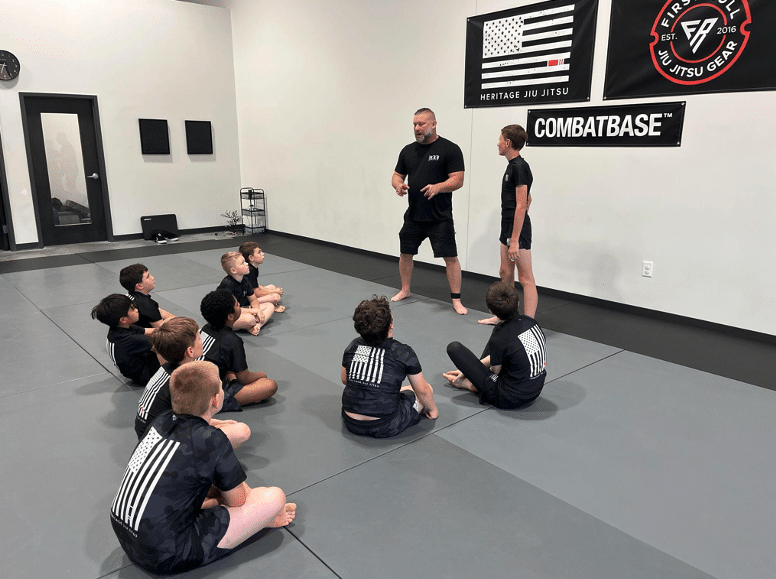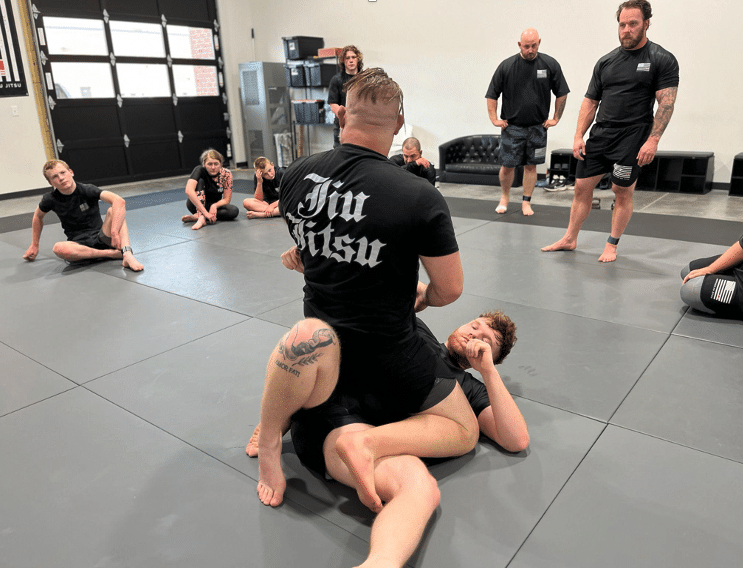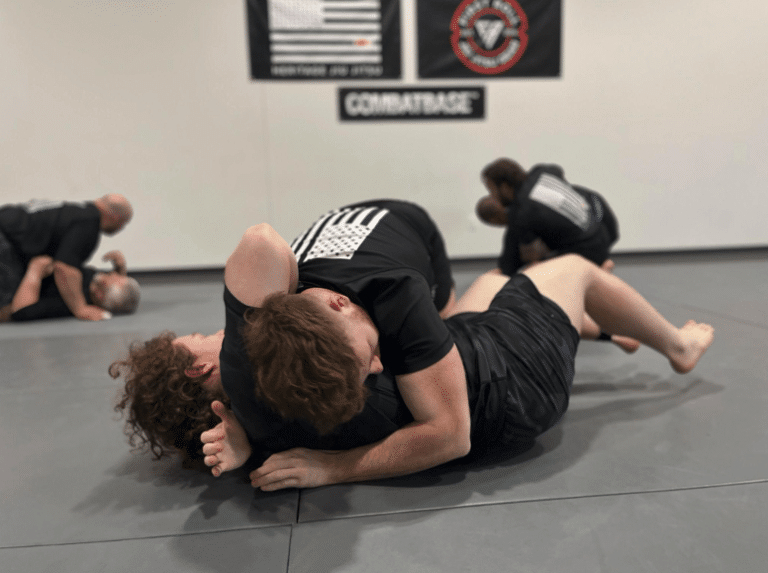In every Jiu Jitsu academy, the mat is more than just a place to train—it’s a space for growth, discipline, and character development. At Heritage Jiu Jitsu, we believe that learning martial arts is about more than mastering technique. It’s about learning how to learn.
This becomes especially important for kids and teens, who are not just building athletic ability but forming the foundations of who they will become. One of the most essential—and often overlooked—parts of that foundation is how a student responds to instruction, particularly from higher belts like black belts. Unfortunately in our culture, this aspect of growth has been bypassed for many adults as well.
The Attitude of a Learner: Humble, Open, and Receptive
In Jiu Jitsu, talent and effort are important—but without humility, they only go so far. Humility is what allows students to admit they don’t know everything, to stay teachable, and to see corrections as opportunities rather than criticism. Humility creates better skill in the long run.
A good learner doesn’t roll their eyes, argue, or push back when corrected. They don’t meet feedback with attitude or sarcasm. Instead, they say, “Yes, coach” or **“Thank you”—**even if it’s the tenth time they’ve heard the same correction. That response signals respect, maturity, and a willingness to improve.
Sadly, in today’s culture of “self learning” from youtube reels and IG highlights, where sarcasm and defiance are sometimes mistaken for confidence, it’s easy for young students to fall into patterns of argumentative or dismissive behavior. At Heritage Jiu Jitsu, we make it clear: true confidence comes from humility and discipline, not defiance.
Why Hierarchy Matters in Jiu Jitsu
Jiu Jitsu is built on a structured belt hierarchy, which represents rank, time, effort, experience, and wisdom. When a black belt gives instruction or correction, they’re not doing so to criticize—they’re offering a shortcut to years of learning.
The belt you wear is more than just a color. It’s a symbol of your place in the learning process, and respecting that process means understanding the hierarchy and trusting the people above you in it.
That doesn’t mean you can’t ask questions or be curious—it means there’s a right way and a right time to do it. A respectful student listens first, thinks second, and speaks third. They don’t interrupt a coach to explain why they think a move won’t work. They don’t argue when asked to fix something. They trust that the person teaching them has their best interest in mind—even if they don’t fully understand it yet.

Respecting Black Belts (and All Higher Belts)
When a black belt addresses a student, the appropriate response is clear and respectful. This is not about ego or blind obedience. It’s about acknowledging the years—often decades—of work that black belt represents.
Responding to a black belt with sarcasm, excuses, or attitude is inappropriate and disrespectful to the art, the school, and the culture of Jiu Jitsu itself.
A good student says:
- “Yes, sir” / “Yes, ma’am”
- “Understood”
- “I’ll fix that”
- “Thank you”
Even if the correction is hard to hear or challenges your ego, responding with maturity and humility shows that you’re serious about growth. And that respect flows both ways—good coaches are always rooting for your improvement, not your embarrassment.
Coaching Is Not a Debate
Sometimes younger students, especially teens, begin testing boundaries by treating corrections like debates. They offer excuses instead of listening. They respond with “I was going to do that,” or “But I thought…” or “I saw someone else do it differently” and even “I do it this way, and it works for me.”
While those reactions might seem small, over time they create a pattern of defensiveness that slows learning and damages team culture. A good student knows that coaching is not a negotiation. It’s guidance, freely given, meant to help them improve.
If a correction feels confusing, that’s okay—but there’s a right way to follow up. Ask a thoughtful question after class. Say, “Can you show me again later?” Or better yet, just try the correction and reflect on the results. Often, students learn more by doing than by debating.
The Culture We’re Building at Heritage Jiu Jitsu
At Heritage Jiu Jitsu, we are intentional about cultivating a culture of respect, humility, and discipline. This is not just about running a tight class—it’s about preparing our students to thrive in life. In the workplace, in school, and in relationships, the ability to take feedback well is a superpower.
We want every student to feel valued, challenged, and supported. But that only happens when everyone, from white belts to black belts, buys into a shared culture of mutual respect and growth.
When a child or teen learns to say, “Yes, coach,” instead of “I know,” they’re doing more than learning a martial art. They’re learning how to become coachable, employable, and dependable. And those qualities will serve them long after they leave the mat.
Final Thoughts
In Jiu Jitsu, as in life, the best learners are not always the loudest, strongest, or fastest. They are the ones who show up, stay humble, and listen deeply. At Heritage Jiu Jitsu, we are proud to build athletes and students of character—students who respect the journey, honor the hierarchy, consider a different approach, and embrace the lessons, even when they’re hard.
If you’re looking for a place where you and/or your child can grow in confidence, discipline, and respect, we invite you to join us. Heritage Jiu Jitsu offers kids and teens a space to train hard, stay humble, and become their best selves.


